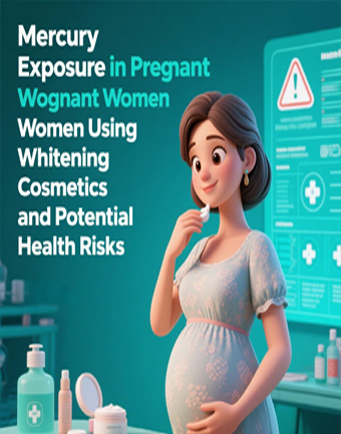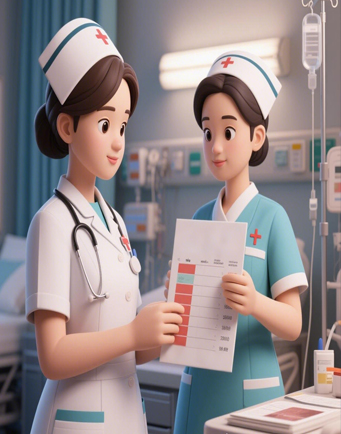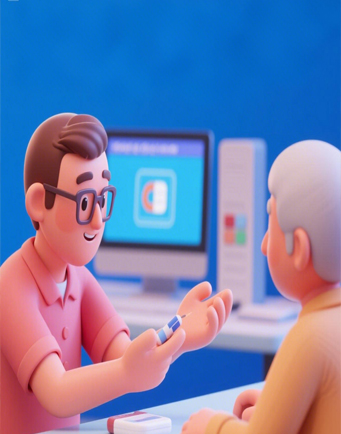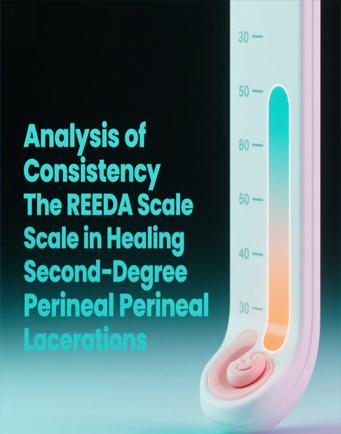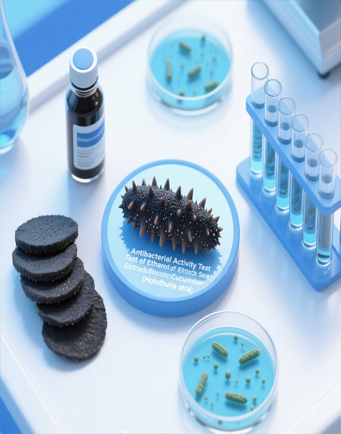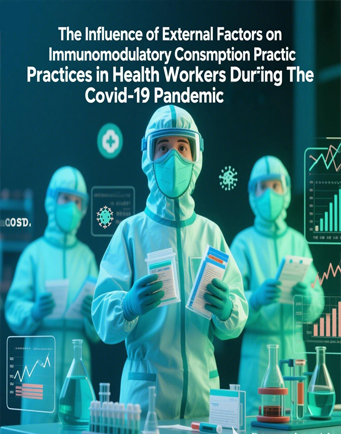Exploring Key Determinants of Trail Run Athlete’s Preparedness to Perform Pre-Hospital First Aid for Ankle Sprain
Downloads
Trail runs have a high risk of injury like ankle sprains. Proper ankle sprain first aid requires preparedness to prevent more serious danger and ensure its success in the pre-hospital setting. This study aimed to explore key determinants of trail run athletes’ preparedness to perform pre-hospital first aid for ankle sprain using the PRECEDE-PROCEED Model theory. The research method used a descriptive correlational which approached cross-sectionally. The research recruited 120 trail run athletes of two professional clubs who were selected by simple random sampling. Data was collected using questionnaires. The variables measured were knowledge, belief, value, attitude, and confidence. Bivariate analysis used chi-square and spearman-rho tests. Multivariate analysis used a logistic regression test. All of the statistical analyses used α = 0,05. The research results show that half of the respondents was 18 – 35 years old. The factors correlated to the trail run preparedness to perform pre-hospital first aid for ankle sprain was as follows. The majority had a medium level of knowledge (54,2%) and a significance level of p = 0.000. Similar trends were found between belief, value, and confidence in which there were no low levels of those variables with the same significance value of p = 0.000. Lastly, respondent’s percentages of attitudes were almost equally distributed between negative (45%) and positive (66%) with a significance level of p = 0,000. In multivariate analysis, all the variables had p-values < 0,05. The OR was as follows, knowledge 14,713; belief 77,919; value 27,554; attitude 7,213; and confidence 12,408. The conclusion is found that knowledge, belief, value, attitude, and confidence were significantly correlated with the athlete’s preparedness Together all variables were correlated significantly to the athlete’s preparedness to perform pre-hospital first aid for ankle sprain. In conclusion, to improve athlete safety during trail runs is by improving the preparedness for any adverse event including trail runs. All of the factors could increase preparedness, but some factors resulted in higher preparedness. The factors that have more effect on preparedness than the others are belief and value.
Azar, F. E., Solhi, M., Darabi, F., Rohban, A., Abolfathi, M., & Nejhaddadgar, N. (2018). Effect of educational intervention based on PRECEDE-PROCEED model combined with self-management theory on self-care behaviors in type 2 diabetic patients. Diabetes & Metabolic Syndrome: Clinical Research & Reviews, 12(6), 1075–1078. https://doi.org/10.1016/j.dsx.2018.06.028
Chen, E. T., McInnis, K. C., Borg-Stein, J., & Finnoff, J. T. (2019). Ankle Sprains: Evaluation, Rehabilitation, and Prevention. Current Sports Medicine Reports, 18, 217–223. https://api.semanticscholar.org/CorpusID:179178041
Emdadi, S., Hazavehie, S. M. M., Soltanian, A., Bashirian, S., & Moghadam, R. H. (2015). Predictive factors of regular physical activity among middle-aged women in West of Iran, Hamadan: Application of PRECEDE model. Journal of Research in Health Sciences, 15(4), 244–249. https://www.scopus.com/inward/record.uri?eid=2-s2.0-84951785369&partnerID=40&md5=7e9d08ac2f1d32858fcccd6314eb2cdf
Fransen, K., Coffee, P., Vanbeselaere, N., Slater, M., Cuyper, B. De, & Boen, F. (2014). The Impact of Athlete Leaders on Team Members’ Team Outcome Confidence: A Test of Mediation by Team Identification and Collective Efficacy. IEEE Transactions on Signal Processing, 28, 347–360. https://api.semanticscholar.org/CorpusID:145065251
Green, L., & Kreuter, M. (2005). Green LW, Kreuter MW. Health Program Planning: An Educational and Ecological Approach. 4th Edition. New York: McGraw-Hill, 2005.
Hardyanto, J., & Nirmalasari, N. (2020). Gambaran Tingkat Pengetahuan Tentang Penanganan Pertama Cedera Olahraga Pada Unit Kegiatan Mahasiswa (Ukm) Olahraga Di Universitas Jenderal Achmad Yani Yogyakarta. Jurnal Kesehatan Mesencephalon, 6(1). https://doi.org/10.36053/mesencephalon.v6i1.195
Kim, J., Jang, J., Kim, B., & Lee, K. H. (2022). Effect of the PRECEDE-PROCEED model on health programs: a systematic review and meta-analysis. Systematic Reviews, 11(1), 1–12. https://doi.org/10.1186/s13643-022-02092-2
Monteiro, S. M. D. R., Jancey, J., & Howat, P. (2014). Physical activity and nutrition intervention for mothers of young children: Process evaluation. Health, 06(03), 223–230. https://doi.org/10.4236/health.2014.63033
Pell, E., & Beach, P. (2022). Introducing Trail Running to Young Athletes. Journal of Physical Education, Recreation and Dance, 93(9), 57–59. https://doi.org/10.1080/07303084.2022.2119795
Rachmawaty, R., Nurhasana, R., Dirgantari, W., Oktapriana, R., & Nofrida. (2023). Peran Founder Dalam Pengembangan Komunitas Lari. Media Bina Ilmiah, 17(17), 2127–2138.
Rostami-Moez, M., Rezapur-Shahkolai, F., Hazavehei, S. M. M., Karami, M., Karimi-Shahanjarini, A., & Nazem, F. (2017). Effect of educational program, based on PRECEDE and trans-theoretical models, on preventing decline in regular physical activity and improving it among students. Journal of Research in Health Sciences, 17(2). https://www.scopus.com/inward/record.uri?eid=2-s2.0-85018718607&partnerID=40&md5=ae2d914297d6bb631633751f305820f6
Sanchez-Garcia, L. F., Penichet-Tomas, A., Pueo, B., & Jimenez-Olmedo, J. M. (2022). Injury Incidence and Pattern in Elite Young Male and Female Trail Runners. Applied Sciences (Switzerland), 12(3). https://doi.org/10.3390/app12031155
Sawyer, T. H., & Sawyer, T. L. (2023). Negligent and Reckless or Part of the Sport: Megenity v. Dunn 55 N.E. 3d 367 (Ind. App., 2016). Journal of Physical Education, Recreation and Dance, 94(5), 62–63. https://doi.org/10.1080/07303084.2023.2185001
Smiley, A., Ramos, W. D., Elliott, L. M., & Wolter, S. A. (2020). Association between trail use and self-rated wellness and health. BMC Public Health, 20(1), 1–10. https://doi.org/10.1186/s12889-020-8273-0
Terry, P. E. (2021). Health Promotion Planning and an Interview With Dr. Lawrence Green. American Journal of Health Promotion, 35(6), 760–765. https://doi.org/10.1177/08901171211022560
Tomás, R., & Visco, C. J. (2022). Management of Acute Ankle Sprains in the Athlete. Current Physical Medicine and Rehabilitation Reports, 10(1), 27–37. https://doi.org/10.1007/s40141-021-00336-1
Viljoen, C., du Toit, E., van Niekerk, T., Mashaba, S., Ndaba, Z., Verster, M., Bellingan, A., Ramagole, D., Jansen van Rensburg, A., Botha, T., & Janse van Rensburg, D. C. (2024). Training for shorter ultra-trail races results in a higher injury rate, a more diverse injury profile, and more severe injuries: 2022 Mac ultra races. Physical Therapy in Sport, 65(July 2023), 7–13. https://doi.org/10.1016/j.ptsp.2023.10.004
Viljoen, C., Janse van Rensburg, D. C., van Mechelen, W., Verhagen, E., Korkie, E., & Botha, T. (2022). Development of a trail running injury screening instrument: A multiple methods approach. Physical Therapy in Sport, 56, 60–75. https://doi.org/10.1016/j.ptsp.2022.06.003
Viljoen, C., Janse van Rensburg, D. C., van Mechelen, W., Verhagen, E., Silva, B., Scheer, V., Besomi, M., Gajardo-Burgos, R., Matos, S., Schoeman, M., van Rensburg, A. J., van Dyk, N., Scheepers, S., & Botha, T. (2022). Trail running injury risk factors: a living systematic review. British Journal of Sports Medicine, 56(10), 577–587. https://doi.org/10.1136/bjsports-2021-104858
Viljoen, C. T., Janse van Rensburg, D. C., Verhagen, E., van Mechelen, W., Tomás, R., Schoeman, M., Scheepers, S., & Korkie, E. (2021). Epidemiology of Injury and Illness Among Trail Runners: A Systematic Review. Sports Medicine, 51(5), 917–943. https://doi.org/10.1007/s40279-020-01418-1
Viljoen, C. T., Sewry, N., Schwellnus, M. P., Janse van Rensburg, D. C., Swanevelder, S., & Jordaan, E. (2021). Independent Risk Factors Predicting Gradual Onset Injury in 2824 Trail Running Race Entrants: SAFER XVIII Study. Wilderness and Environmental Medicine, 32(3), 293–301. https://doi.org/10.1016/j.wem.2021.04.002
Copyright (c) 2024 JURNAL INFO KESEHATAN

This work is licensed under a Creative Commons Attribution-NonCommercial-ShareAlike 4.0 International License.
Copyright notice
Ownership of copyright
The copyright in this website and the material on this website (including without limitation the text, computer code, artwork, photographs, images, music, audio material, video material and audio-visual material on this website) is owned by JURNAL INFO KESEHATAN and its licensors.
Copyright license
JURNAL INFO KESEHATAN grants to you a worldwide non-exclusive royalty-free revocable license to:
- view this website and the material on this website on a computer or mobile device via a web browser;
- copy and store this website and the material on this website in your web browser cache memory; and
- print pages from this website for your use.
- All articles published by JURNAL INFO KESEHATAN are licensed under the Creative Commons Attribution 4.0 International License. This permits anyone to copy, redistribute, remix, transmit and adapt the work provided the original work and source is appropriately cited.
JURNAL INFO KESEHATAN does not grant you any other rights in relation to this website or the material on this website. In other words, all other rights are reserved.
For the avoidance of doubt, you must not adapt, edit, change, transform, publish, republish, distribute, redistribute, broadcast, rebroadcast or show or play in public this website or the material on this website (in any form or media) without appropriately and conspicuously citing the original work and source or JURNAL INFO KESEHATAN prior written permission.
Permissions
You may request permission to use the copyright materials on this website by writing to jurnalinfokesehatan@gmail.com.
Enforcement of copyright
JURNAL INFO KESEHATAN takes the protection of its copyright very seriously.
If JURNAL INFO KESEHATAN discovers that you have used its copyright materials in contravention of the license above, JURNAL INFO KESEHATAN may bring legal proceedings against you seeking monetary damages and an injunction to stop you using those materials. You could also be ordered to pay legal costs.
If you become aware of any use of JURNAL INFO KESEHATAN copyright materials that contravenes or may contravene the license above, please report this by email to jurnalinfokesehatan@gmail.com
Infringing material
If you become aware of any material on the website that you believe infringes your or any other person's copyright, please report this by email to jurnalinfokesehatan@gmail.com.


